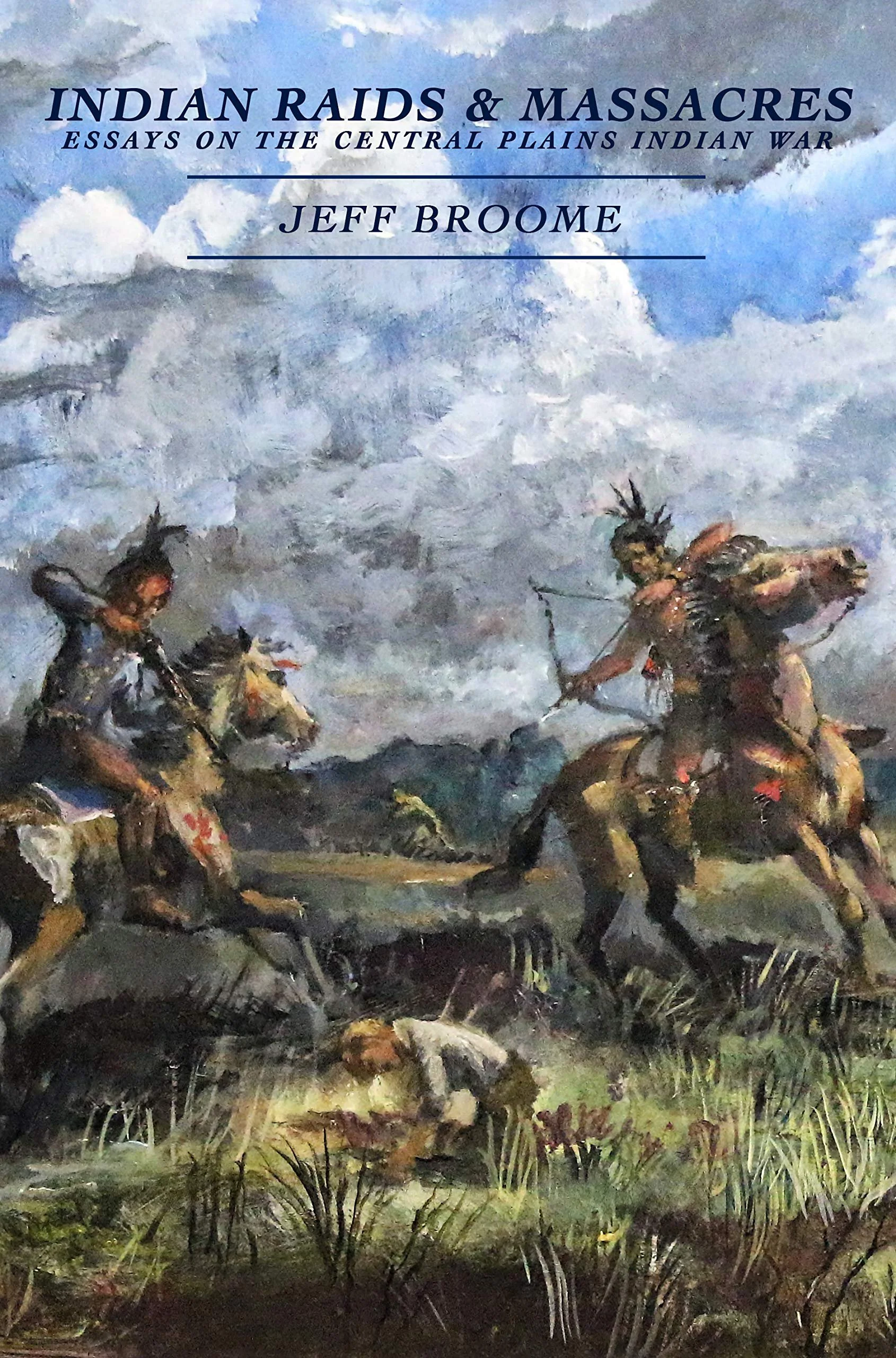Review of “Indian Raids and Massacres”
Indian Raids and Massacres: Essays on the Central Plains Indian War by Posse Member Jeff Broome. Caxton Press, Caldwell, Idaho. 506 pages. Photos, footnotes, bibliography, index. Softcover. 2020.
Jeff Broome’s extensive research into the Plains Indian Wars spans more than twenty-five years and has produced an impressive body of work that includes numerous books and countless articles. Students familiar with Broome’s writings will recall that he was among the first to recognize and to exploit the vast treasures buried within the Indian Wars depredation claims files located at the National Archives.
Broome’s latest volume includes a series of thirteen critical essays covering various aspects of the Central Plains Indian Wars, particularly as they relate to the Cheyenne and Arapaho peoples, spanning the years 1864 through 1870. As Broome states in his preface, each of these essays was previously published as a stand-alone article over the past twenty years. Each has recently been overhauled and expanded based upon additional research. Nearly eight hundred forty footnotes, along with the creative inclusion of extensive original-source excerpts testify to the depth of scholarship represented. In addition, Broome introduces each essay with a brief narrative explain-ing his personal interest in the topic, the controversies he unearthed and the essay’s overall con-text within the broader scope of the book.
Broome is certainly no stranger to controversy. The reader who delves into these essays will be well-advised to prepare for an extensive exercise in critical thinking. Each of Broome’s thirteen topics provides a response to what Broome calls “truth decay,” the process by which historical narratives become distorted through faulty interpretation of original sources, author biases, or failure to corroborate conclusions based upon multiple sources.
Broome’s essays are presented essentially in chronological order, beginning with an analysis of the 1864 Hungate Massacre. Moving through a series of raids, depredations and military reactions, Broome uncovers stories of previously unknown individuals who might otherwise remain lost to history, like Lizzie Fletcher a woman who, like Cynthia Parker preferred to marry and re-main with the Indians. Or like Tom Alderdice, a veteran of Beecher’s Island who met with Libbie Custer while seeking information about his captive wife.
Among Broome’s military analyses are an in-depth look at Custer’s summer campaign of 1867, the Kidder Massacre of 1867, various military reports related to possible white renegades participating in depredations occurring in Kansas in 1868 and the Summit Springs Battle of 1869.
Tangential stories that Broome unearthed during his research include the fascinating back-ground of the 7th Cavalry trooper killed by Wild Bill Hickok in Hays City, Kansas and the story of James Alexander Moore, a notable pony express rider, whose exploits had been distorted with incorrect dates, distances of his ride and other information.
Jeff’s discussion of his passionate search for the grave of murdered captive, Susanna Alderdice rounds out the volume.
Be prepared for challenges. Whether or not you agree with Jeff’s conclusions, these essays will certainly provide sufficient thought-provoking grist for anyone’s mill.
— Dennis Hagen
